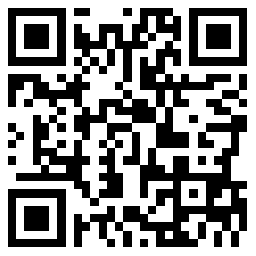中英
1
hierarchy classification中文是什么意思
- 中文翻譯
- 造句
- 譜系式分類
- classification n. 1.選別;分等,分級(jí);分選。 2.【動(dòng)、植】分類( ...
- hierarchy if 不同層次的需求
- classification n. 1.選別;分等,分級(jí);分選。 2.【動(dòng)、植】分類(法)。 〔分類級(jí)別為: phylum 【動(dòng)物;動(dòng)物學(xué)】及 division 【植物;植物學(xué)】門,class 綱,order 目,family 科,genus 屬,species 種,variety 品種〕。 3.類別;等級(jí);(文件的)保密級(jí)。 a classification yard (車站的)調(diào)車場(chǎng)。
- a hierarchy of nodes 由節(jié)點(diǎn)所組成的層次體系
- analytical hierarchy 解析分層
- anxiety hierarchy 焦慮層序
- archive hierarchy 檔案庫(kù)層次
- arithmetic hierarchy 算術(shù)譜系
- arithmetical hierarchy 算術(shù)譜系
- attributes hierarchy 屬性級(jí)別
- balanced hierarchy 均衡層次結(jié)構(gòu); 均衡的層次結(jié)構(gòu)
- budget hierarchy 預(yù)算層次結(jié)構(gòu); 預(yù)算分層結(jié)構(gòu)
- calibration hierarchy 校準(zhǔn)層次
- calling hierarchy 調(diào)用層次
- cartographic hierarchy 制圖分級(jí)
- certification hierarchy 證書等級(jí)
- chomsky hierarchy 杭士基階層; 喬姆斯基層次結(jié)構(gòu); 喬姆斯基層級(jí); 喬姆斯基譜系; 喬姆斯基體系
- class hierarchy 類別繼承體系, 類別階層 類層次結(jié)構(gòu); 類階層
- collapse hierarchy 合并繼承層次; 折疊繼承體系; 摺疊繼承體系
- comp hierarchy 計(jì)算機(jī)級(jí)機(jī)構(gòu)新聞組
- conceptual hierarchy 概念階層
- containment hierarchy 容器分層結(jié)構(gòu)
- control hierarchy 多級(jí)控制; 計(jì)算機(jī)控制級(jí)別; 控制層次; 控制級(jí)別
- Since scientific papers are usually semi - structural documents , a hierarchy classification model based on the metadata of scientific papers is proposed , where the metadata include the titles , keyword sets , abstracts and so on
摘要針對(duì)科技論文具有半結(jié)構(gòu)化的特點(diǎn),提出利用科技論文的元數(shù)據(jù)的多層次分類模型。 - At the same time , because general hierarchical is not good on question classification , this paper proposes a new method for chinese question hierarchical classification . this method combines the key class features with the question syntactic features to classify questions . since this method extracts the syntax features and adds syntax information into question classification , at last , the precision of the coarse classes reaches 88 . 25 % and fine classes reaches 73 . 15 % , respectively improves nearly ten percent than the traditional hierarchy classification , proving this method is effective
本文針對(duì)文本分類和問題分類的差別,利用依存分析提取主干和疑問詞及其附屬成分,并結(jié)合主干關(guān)聯(lián)詞對(duì),采用支持向量機(jī)分類器,此方法大大減少了問題分類的噪音,突出了問題分類的主要特征,并考慮了詞與詞之間的句法關(guān)系,取得了良好效果;同時(shí),針對(duì)普通層次分類在問題分類上效果不理想的情況,本文提出了類別主特征結(jié)合句法特征的中文問題層次分類新思想,利用句法分析提取分類特征,在問題分類中融入了句法信息,總的準(zhǔn)確率達(dá)到大類88 . 25 %和小類73 . 15 % ,比傳統(tǒng)的層次分類分別提高了10個(gè)百分點(diǎn),證明了此方法的有效性。
- 推薦英語(yǔ)閱讀
hierarchy classification的中文翻譯,hierarchy classification是什么意思,怎么用漢語(yǔ)翻譯hierarchy classification,hierarchy classification的中文意思,hierarchy classification的中文,hierarchy classification in Chinese,hierarchy classification的中文,hierarchy classification怎么讀,發(fā)音,例句,用法和解釋由查查在線詞典提供,版權(quán)所有違者必究。


